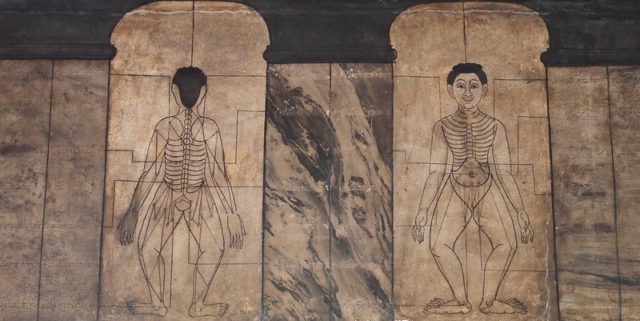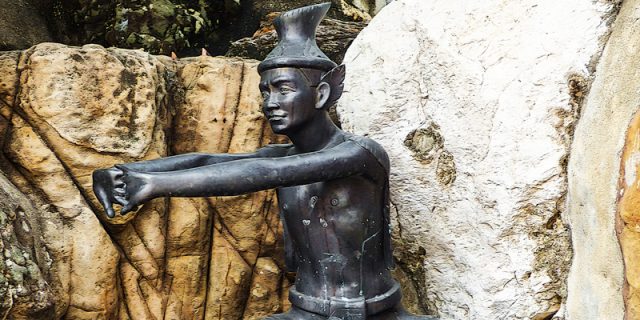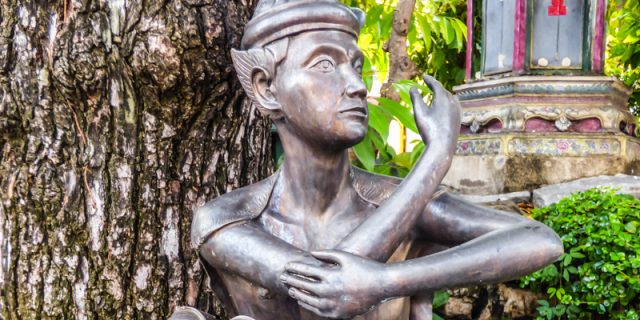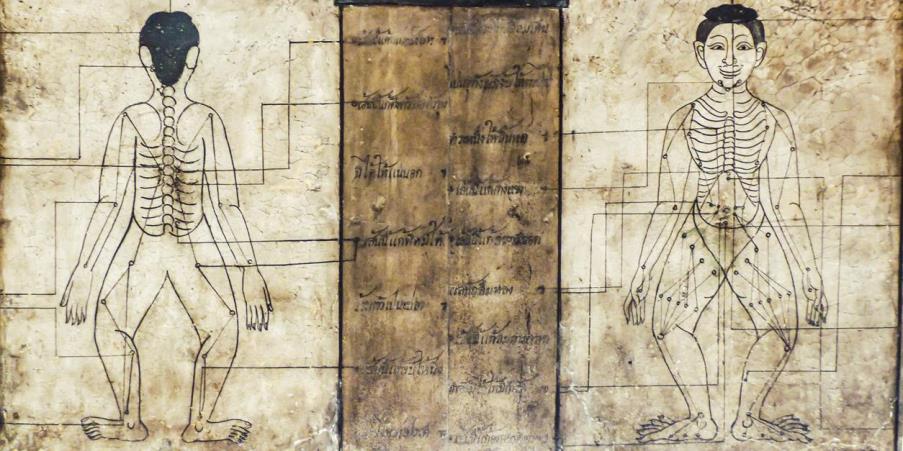
In this post, we’ll dive a bit deeper into the topic of the sixty marble tablets at the Wat Pho temple — Wat Po or Wat Phra Chetuphon — in Bangkok. These stone tablets (or plaques) are specifically related to Thai Massage.
Apart from these sixty plaques, there are many inscriptions and illustrations in Thai language on limestone, marble, and slate plates to be found in the various buildings of the Wat Pho temple complex. In 2011, these illustrations and inscriptions — officially called the “Epigraphic Archives of Wat Pho” — were registered in the UNESCO’S Memory of the World Program to promote, preserve, and propagate the wisdom of the world heritage.

As stated on UNESCO’S website:
“The Epigraphic Archives of Wat Pho (Temple of the Bodhi Tree) in Bangkok is a unique collection of 1,431 stone inscriptions in Thai language and scripts made between 1831-1841 on both religious and secular subjects, representing a wide range of Thai knowledge of Asian and local roots of the time in the context of over five centuries of global exchanges in trade, politics and culture. It was a conscious effort by King Rama III and Thai scholars to preserve and make them visible to the public with the ultimate aim in general education on cultural heritage, diversity and civilizations.”
The above was a huge undertaking by King Rama III (reign: 1824 – 1851 CE), Thai scholars, and people associated with the Royal Court to preserve and present Thai traditional knowledge to the general public by displaying them on exterior and interior walls, windows, posts or wooden beams of twenty-five buildings and structures around the public temple grounds.
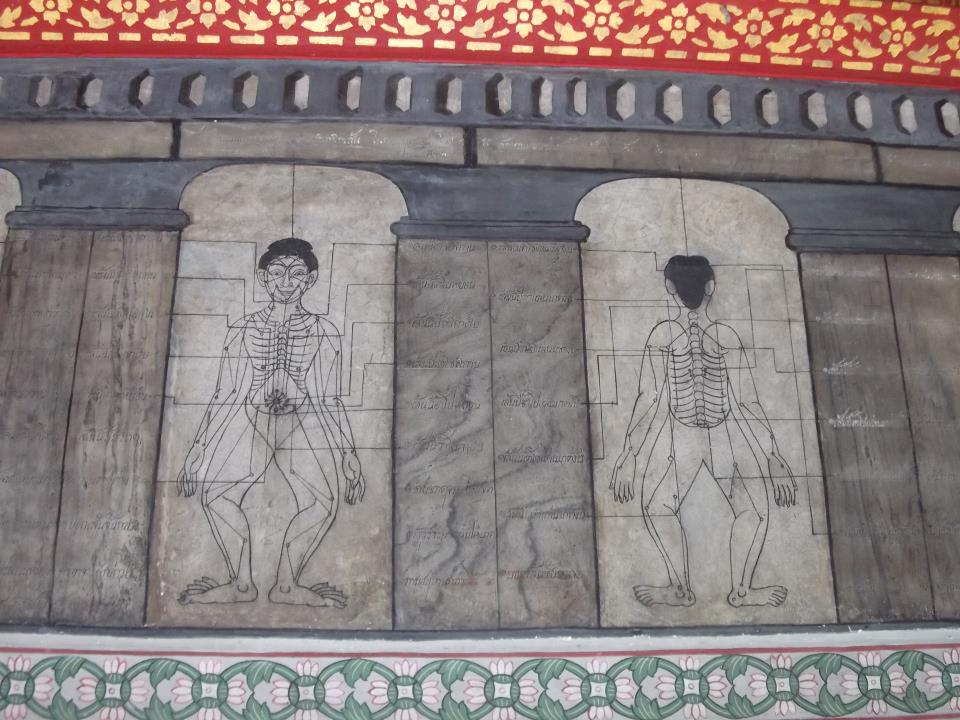
Some of the inscriptions serve as medical instructions for Thai Massage therapists, such as the famous 60 marble plaques (30 pairs) in the “medical pagoda” (or “Thai Massage pavilion”) depicting the front (30 marble plaques) and the back of the human body (another 30 marble plaques), which have engravings of Acupressure Points (some of which correspond to certain Chakras) and Lom Pran Energy Lines, the latter better known as the Sen Sib Lines.

These Sen Energy Lines Charts and Acupressure Points are still used today in Traditional Thai Massage. At the sides of the stone tablets — which are also called the Pharb Phaen Nuad or Massage Illustrations — there are explanations in Thai language of their therapeutic use to treat certain ailments.
Some of the stone texts can also be found in manuscripts that are kept in the Thai National Library. It’s not clear if these texts where the drafts for the explanations near the stone tablets or if they were recorded afterwards. Yet, generally it’s believed that (parts of) the medical textbooks that were compiled in that period served for the engravings on marble slabs, which were then placed on the walls of the Wat Pho pavilions for the public to read and use. By itself not remarkable, because images and engravings were used during millennia as a carrier to preserve (or summarize) the skills and knowledge of traditional medicine and other arts.
Additionally, the sixty stone tablets basically give us an implicit overview of the principles of Thai Massage, which — in short — is that we can keep balance and health of body and mind by pressing and stretching the Sen Energy Lines and Acupressure Points in order to clear the Wind inside the lines or points.

The first 9 pairs (18 plaques) give us the names and locations of ten Energy Lines (the Sen Sib), and the tenth pair (two plaques) describe the three major types of diseases that result from Energy Line disorders, being: relapse (deterioration), flabbiness (weak, without force, or excess), and disability, which are caused by imbalances in the Thai Four Elements (Fire, Water, Wind/Air, and Earth).
The pairs 11 to 30 (40 stone plaques) refer to the imbalances of each of the Four Elements and further depict the Energy Lines and Points that need to be addressed to treat a variety of disease symptoms associated with those imbalances. In fact, we can see that Sen Energy Lines, the Wind (Prana, Lom Pran, or Life Energy) that runs through them, the pressure points, and the Four Elements form an interdependent whole.
Mind that determining which of the Four Elements is out of balance and thus finding the cause of the disease is part of Thai Medicine Diagnostics, an art that requires its own proficiency.
In any case, the smoother the Wind runs through the Sen Lines, the healthier one is or becomes. The opposite is likewise true: if the Wind is obstructed to flow uninhibitedly, it will cause discomforts or diseases.








